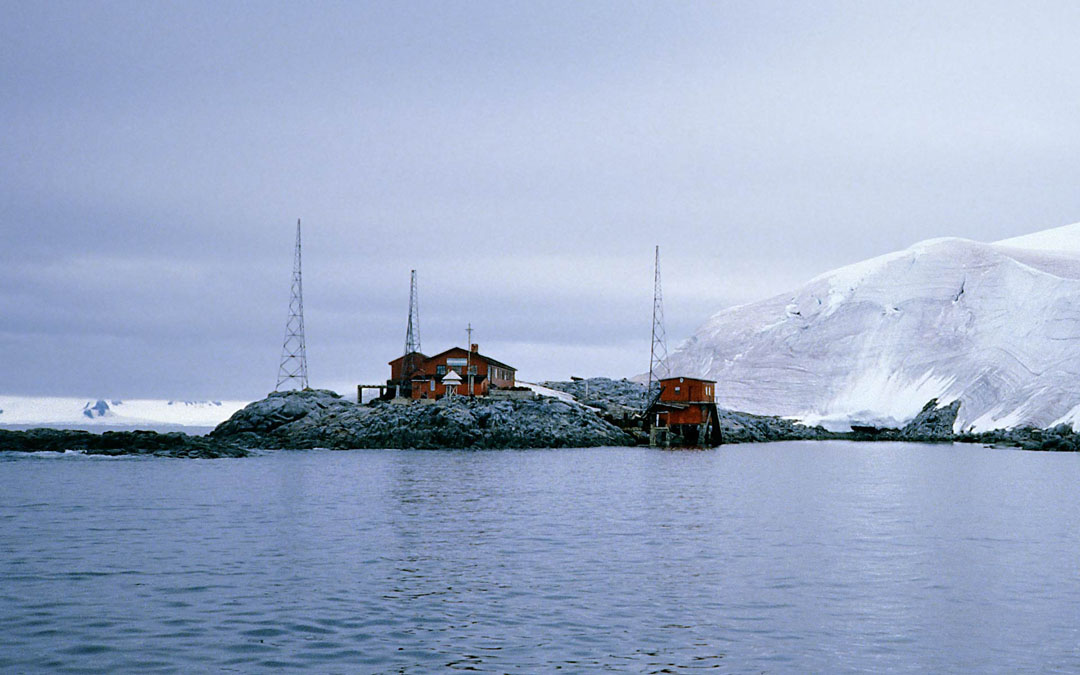
The Argentine base on Gamma Island in the Melchior Archipelago. A small pier is available for supply ships, but it sits too high for small yachts to dock.
Most of Antarctica's coastline—and that of its surrounding islands—is covered in ice, with very few rocky areas suitable for building a base.
Annual averages at the base: temperature -3°C, humidity 85%, and atmospheric pressure 990 hPa.
(Hover to Zoom Photo)Read this episode on the "Red Ruin" page.
After leaving Deception Island—a volcanic island in the Antarctic—Aomi arrives at the Melchior Islands on the third day. Here lies Melchior Base, built by Argentina in 1947.
The map below shows the location and layout of the Melchior Islands.
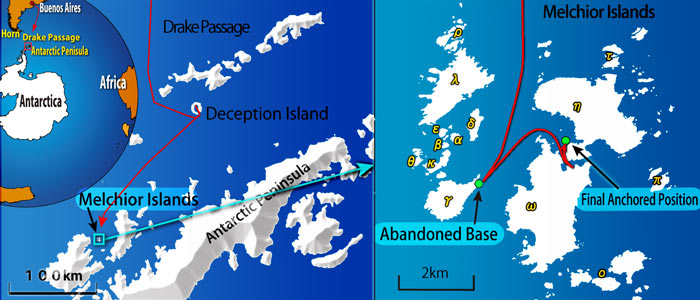
The islands are named using Greek letters, starting with alpha. For example, the island of π (pi) is located in the middle-right of the map, with the large island of ω (omega) just to its left.
The base is on Gamma Island. You can't build a base just anywhere in the Antarctic. Most of the land is covered in ice, and if you build on it, the shifting ice will eventually carry it into the sea.
For this reason, coastal bases must be built on rocky ground. However, flat rocky areas are extremely rare along the Antarctic coast, so suitable building sites are very limited.
The only possible rocky area around there was on Gamma Island. The photo below shows Gamma Island from the north. At the end of the arrow, you can see three red buildings on the dark rocky ground, along with communication towers. The rocky area is very limited compared to the total size of the island.
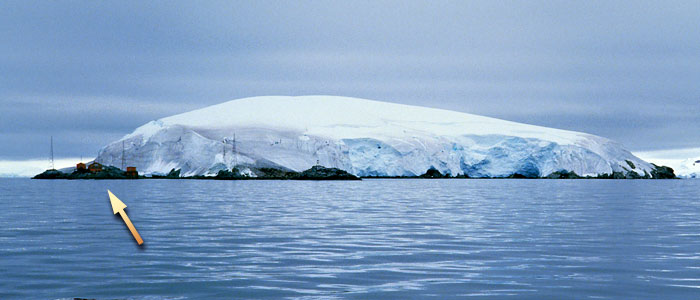
There was a concrete pier at this base, so I moored Aomi's bow and went ashore. Naturally, I also dropped an anchor from the stern.
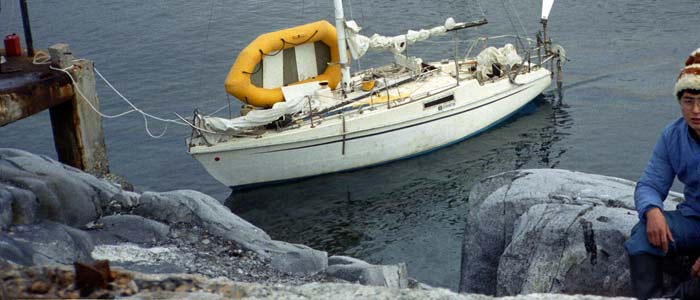
When I got up on the pier, I saw several oil drums. I had used more fuel than expected on the way from Deception Island, so I thought I would get some diesel.
However, when I inserted the hose, I found that most of it was water.
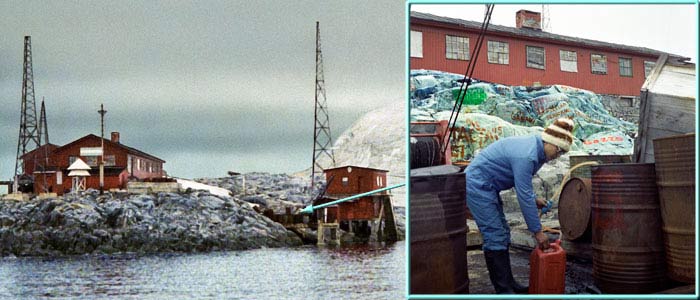
As you can see in the photo on the right, there was a lot of graffiti on the rocks. I wonder if people who visited here left their names to mark their stay.
From the pier, I walked up the rocks a little and headed towards the base's main building. I wondered what it was like inside and felt an urge to explore.
*
According to the British Navy's Antarctic Pilot, this base was built in 1947, and the note "Inspected 1963" was added later. This suggests that the base was closed sometime before 1963. In fact, meteorological observation data for this base is only available up to 1961. Let's take a look at the temperature records.
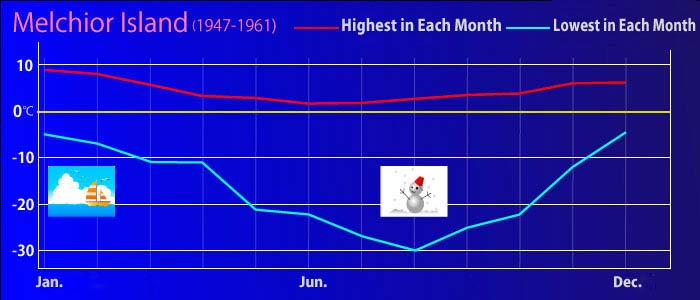
Since it's in the Southern Hemisphere, February is the peak of summer, and August is the middle of winter. As you can see from the graph, summer temperatures can rise to nearly +10 degrees Celsius, while winter lows drop to -30 degrees. This seems relatively warm, considering it's in the Antarctic.
I walked up the rocky path from the pier and arrived in front of the main building. The windows were boarded up, so I couldn't see inside. Even when I tried peeking through the gaps, it was too dark to make out anything.
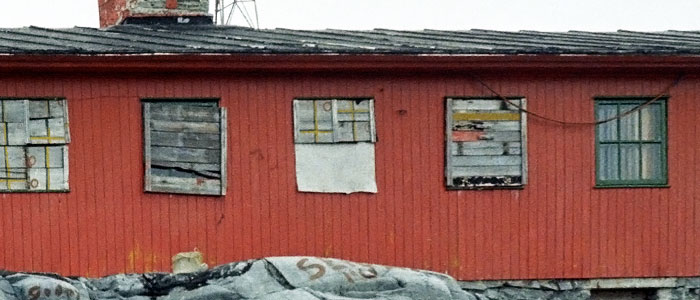
I stood before the entrance door and turned the round brass handle, but it seemed locked. Then, I noticed a small wooden box nailed to the wall beside the door. When I looked inside, I found a key!
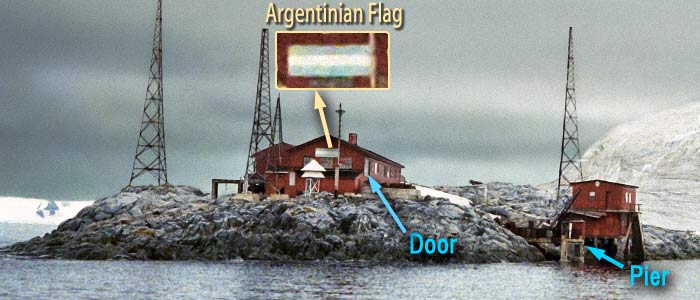
The diagram below is a rough sketch of the main building's interior from Aomi's logbook. I replaced the original Japanese labels for rooms like the kitchen and bedrooms with English labels written in green.
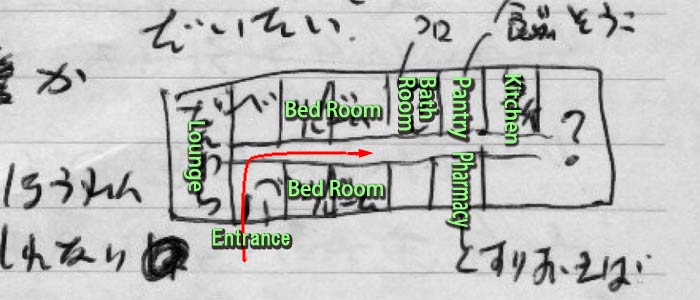
After passing through the entrance, there's a lounge on the left, while a series of bedrooms extends to the right. Each bedroom is equipped with a bulky cast-iron radiator for steam heating. Beyond the bedrooms are a toilet, kitchen, medicine storage room, and more.
Glass bottles filled with clear liquid were placed at intervals along the hallway. I guessed they were probably carbon tetrachloride (CCl4) for firefighting, since one of the greatest dangers at an Antarctic base is fire.
![]()
The background of this page is a photo of Antarctic snow.